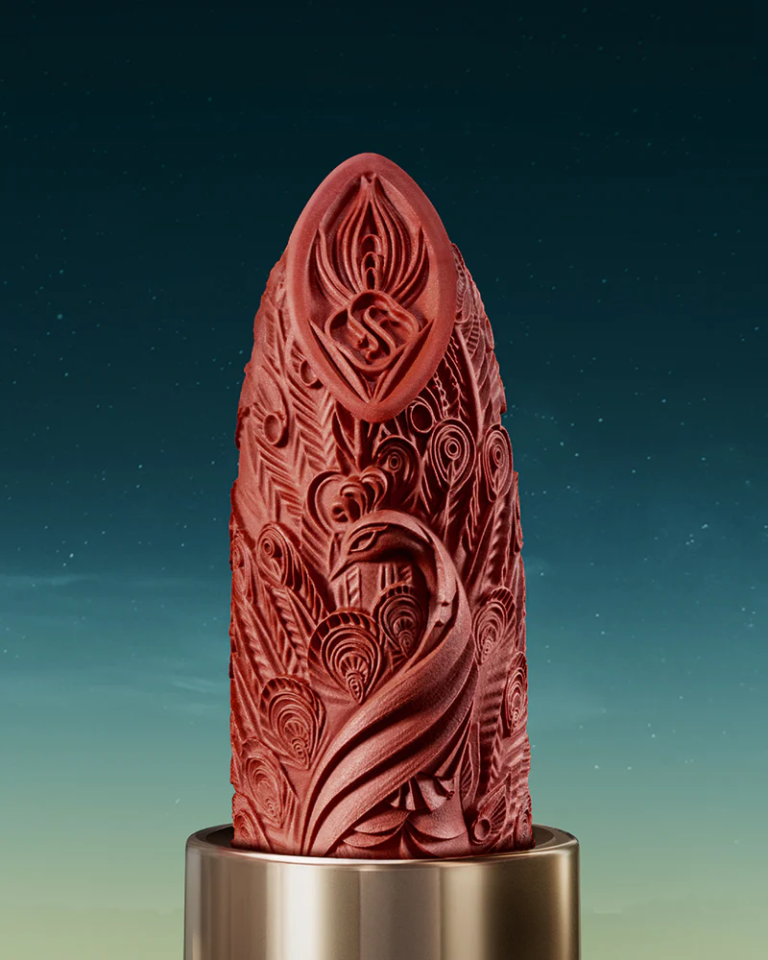Huaxizi(Florasis), BLOOMING ROUGE LOVE LOCK LIPSTICK
What is the production process of lipstick?
The lipstick production process is complex and involves many steps. It can be divided into three main parts: formulation, manufacturing and packaging.
Lipstick ingredients:
Lipsticks have been around for centuries, and the main ingredients have not changed much over time.
The most important ingredient is wax, which gives lipstick its structure as well as its texture. Waxes provide the stickiness that makes it possible to stay on your lips without smearing or bleeding. They also make it possible for you to peel off the top layer of your lip before putting on more lipstick. Waxes make up about 50 percent of most lipsticks by weight.
Expect wax, there are oils, resins, fatty acids, and pigments that color the lipsticks. Oils add shine to your lips, while fatty acids give them some moisture so they don’t feel dry during the application or wear time. Resins help hold all these ingredients together in a smooth paste instead of an oily liquid that would slide off your lips easily when applied to them. These ingredients ensure that your lipstick does not melt off your lips when you’re outside in hot weather or when you eat something warm or steamy that melts other makeup products off your face or hands (such as mascara).
Other common ingredients include:
Butylene glycol — A solvent that is used to dissolve other ingredients in the formula and to help blend them. Butylene glycol is also used in foods, cosmetics, and pharmaceuticals. It’s considered safe for use in cosmetics and personal care products by both European Union (EU) and US regulators at concentrations of up to 15%. However, there’s limited scientific evidence about how it may affect humans.
Castor oil — This oil is derived from castor beans (Ricinus communis) and has been used in skincare products since ancient times because of its antibacterial properties. The FDA classifies castor oil as GRAS (generally recognized as safe) when used at concentrations up to 2%.
The production of lipstick is a complicated process. It involves mixing many different ingredients, which must be heated and stirred until they are completely mixed, and then pouring the mixture into a tube.
The lipstick manufacturing process consists of six steps:
Step 1
The first step in the process is mixing the ingredients. The pigments and oils are mixed in a large vat, where they are heated to about 250°F (121°C) for 30 minutes. This mixture is then cooled to about 100°F (38°C) for about an hour before being filtered through a wire mesh screen. The mixture is then transferred to another tank where it’s heated to about 175°F (79°C). The emollients are added to this tank, followed by additional heating until the mixture reaches the desired temperature of 200–250 degrees F (93–121 degrees C). The pigment particles are dispersed evenly throughout the mixture at this point by blending it with a high-speed mixer or agitator.
Step 2
After mixing, the lipstick mixture is ready for pouring into tubes. Each tube contains a small amount of aluminum powder inside its bottom half; this helps to create a smooth surface on top of each tube once filled with lipstick. A small amount of oil is added to each batch of lipstick so that it doesn’t stick together when poured into tubes; otherwise, lipstick would clump together as it cools down.
Step 3
The next step involves filling the lipsticks into their tubes. This is done by using a machine called a “pouring spout feeder,” which dispenses the lipsticks into the tube using gravity and vacuum pressure. The pouring spout feeder allows for maximum precision, so no air bubbles get trapped in the tubes during filling and there are no gaps between the caps and lids on the finished product.
Step 4
Once filled, each tube goes through an automated ultrasonic cleaning process that removes any remaining oil or other impurities from its surface and is inspected for defects such as air pockets or thin spots that might cause cracking during use. Then, they can be capped off and packaged together with other lipsticks in boxes or cases according to color family (reds together, pinks together).
Step 5
Packing of lipstick tubes into boxes. Lipstick tubes are packed tightly together within cardboard boxes to prevent them from breaking during shipping. Shrink wrapping of lipstick boxes with a plastic film that is then heat-sealed around them. This process helps keep moisture out of the package, which can lead to premature product degradation if it were not sealed in this manner.
Step 6
Labeling of lipstick boxes with their brand name and other relevant information such as ingredients lists and expiration dates; this step also includes attaching small stickers onto each tube containing information about that particular color’s pigmentation level, as well as other relevant details about how long it will last on lips before needing reapplication.
Endnote
At Seny Beauty, as an 18 years pioneer in the beauty industry, We have one of the best makeup factories for lipstick in China, we offer versatile, customizable, and 100% quality-guaranteed lipstick private label cosmetic manufacturing. Contact us if you are interested, or if your want to have your own lipstick line!



